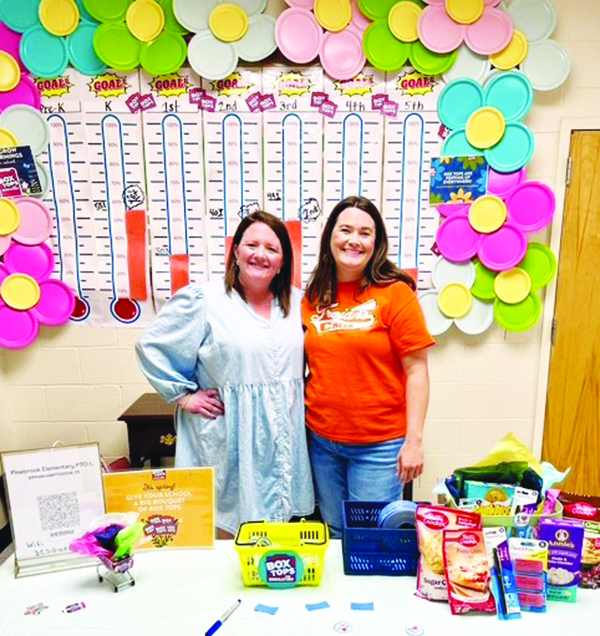The Literary Corner: Renegade Writer’s Guild
Published 9:50 am Thursday, April 30, 2020
|
Getting your Trinity Audio player ready...
|
“Then and Now”
By Linda H. Barnette
As an amateur genealogist, I have spent many years researching my family background. I will write more later about how that became my hobby, but for now it seems interesting and possibly helpful to draw a comparison of life 100 years ago to ours today.
As a child, I spent a lot of time with my grandparents on Hartley Road and have written about how hard their lives seemed without electricity, running water, or telephones. Yet as they got older, they had those things even in the country. Thus, they were not always as cut off from others as their parents had been.
So for my comparison, I will use my Hartley great-grandparents. Thomas Hartley and Eliza Young Hartley lived across the river in Davidson County. These days one can turn right at Tar Heel Q and wind around, making several right turns until almost reaching the river. Now there are many homes and other buildings along the road, but when I was young and went with my parents and grandparents to the annual family reunions at the old home place, that whole area was remote. The roads were graveled and in some spots covered by canopies of trees.
Think for a moment how life would have been in that area during a pandemic such as the flu epidemic of 1918. With large families, none of today’s amenities, and perhaps a son coming home from the war having been exposed to that flu, how would they have dealt with a major health crisis? Imagine having no doctors, no telephones or other means of communication, no modern medicines, no neighbors within miles, and where the only way to have chicken soup to give to the sick person was to go outside, catch the chicken, kill it, and make the soup on a stove that burned firewood. Whether one lived or died in those days was a combination of good luck, good care, and the grace of God.
The main thing the family could do was to isolate the sick person so that the other folks in the house would not be infected. Then they prayed.
In Europe Dr. Alexander Fleming discovered penicillin after the pandemic. That drug would have been very helpful for folks with flu and pneumonia. So a new medical discovery will likely happen after this pandemic also. Something good often comes out of something bad.
Now even with all of our modern technology, doctors, nurses, pharmacists, medicines, and hospitals, we are in a similar situation to that of our great-grandparents. The enemy is a disease with no known treatment, no vaccine, no medicines, and seemingly more contagious than the flu of 1918. Although we don’t have to kill the chickens in order to get the soup, the grocery stores are always out of many of the items that we can normally find.
So once again we have to stay at home and pray. Yet in every bad situation there are lessons to be learned. Perhaps when we do get to break out of isolation, we might have renewed faith in God, a greater love for our families, friends and our fellowmen, and the workers in all areas who kept us alive. We might even appreciate nature and our environment more than usual. Just as the Bible teaches, God never gives up on his people. It appears that we will have another opportunity to do things right!!
“Things That Affect Us”
By Kevin F. Wishon
“Now, what have I come in this room for?” No doubt, you’ve asked yourself this question a few times in just the last two months. You are not alone. Thankfully, from what I’ve read, it is probably not due to a decline in brain function. It’s infuriating to be working so diligently, step out of the room to get something, and bam, you can’t remember. Then you find yourself trying to rewind your memories to recall what it is you are supposed to be retrieving. What has happened?
After reading some intriguing research about the brain, I have learned the answer. The reason we forget is that when a person leaves a room through an opening or doorway, our mind redirects its attention to its new surroundings. So, the next room entered with all of its distractions now overrides what’s in our short-term memory. This brings us to the next thing I have learned about the brain. Whatever that may be occurring around us and has our attention, usually, is foremost on our minds. This information explains why the brain forgets the item we leave the room to retrieve. The new room or space we enter gets our foremost attention, taking our minds off the task we have in progress.
Another significant piece of information about the brain I’ve come across is how a mystery can fixate the mind. There’s something that appeals to the mind about an unresolved situation. You need only look to the Internet to see the multitude of videos regarding unexplained events, crimes, or accidental deaths with the posters trying to determine what happened. Then there are also the TV shows that have entertained people with episodic mysteries for decades. Advertisers also seem to know this too. Remember those TV advertisements that end abruptly with the commercial directing you to go online to see how it will end? This type of ad is an appeal to the part of our brain that desires a satisfying conclusion.
Lastly, knowing that what has our attention is foremost in our minds is a particularly important piece of knowledge these days. With the waterfall of news pouring over us constantly, it is easy for the mind to become overwhelmed. Unless we step out of the deluge and focus on something else, we may find ourselves feeling unwell, anxious, or upset. Life is more than whatever or whoever, excluding our families, is trying to grab and hold our attention.
“A Handbook for Learning”
By Stephanie Williams Dean
We all could stand to learn a thing or two – the way a scout learned to learn.
Recently, a friend asked me to go through some of her old books to see if there were any in which I might have an interest. Among the ones I brought home, my favorite was a 1929 revised edition of an old Girl Scout Handbook initially published in 1920.
When young, I participated in scouting as a member of both a Brownie and later, a Girl Scout troop. What a broad baseline of knowledge scouting afforded me. Others have often referred to me as being “well rounded.” There’s no doubt that a wide range of interests was due to exposure to many topics as a young scout. Honesty, I believe I learned more practical knowledge in scouting than I did in school.
As I thumbed through the book, I was reminded of the opportunities for receiving merit badges. There were multiple offerings in various categories with corresponding requirements and references for each. The knowledge required to achieve a badge was impressive. This list represents a few of my interests –
The Arts – artists, journalist, scribe, craftsman, photographer, dressmaker, needlewoman
The Art of Housekeeping – housekeeper, handy woman, laundress,
Culinary Art – canner, cook, hostess
The Natural Environment – insects, garden flowers, birds, tree finder, wildflower finder, rock finder, land animal finder, water life, and star finder
Caring for Others – child nurse, first aid, home nurse, health winner, life saver
Other badge opportunities were for international knowledge, foreign language interpreter, telegrapher, business woman, and citizen. Plus more.
Let’s take a close look at the proficiency level of just one of these badges – the tree finder, for instance. To earn the merit badge – one must know the parts of the tree. Know 25 trees and shrubs when in leaf. Know at least 10 of those by bud, leaf scars, and bark. Know something of the life history and life processes of trees. Be able to read the age of a tree by its ring and recent growth by the twigs. Plant at least one tree that you have raised from the seed. Demonstrate how trees should be pruned, trimmed, and breaks mended. How trees are to be protected from insect and fungus diseases. Make a list of woods and their uses. Know the best trees to plant in the streets, in small gardens, and about the school.
Pretty extensive requirements, would you agree?
How many readers can identify the trees in your yard? So while on lockdown, I propose a simple project. I suggest we engage in a study. Identify the trees growing on our property. Take samples of the bark and compare. Examine the different leaves. Do plant one flowering tree this spring – I suggest a beautiful Kwanzan Cherry. You’ll be glad you did in the years to come. Be sure to read the planting guidelines that come with the tree, staying away from the house and power lines (like I didn’t – whoops). Always plant following directions to prevent overgrowth and topping, which is not healthy for the tree. Allow trees to grow naturally by initially planting them in the most suitable spot.
•••
For more information on Renegade Writers Guild, visit www.renegadewritersguild.wordpress.com.
•••
Submit a favorite memory of life in Davie County. Story should be typed and not more than 250 words. Please include your name and phone number or email address. RWG retains reprint rights. Email to lhb1@yadtel.net.




